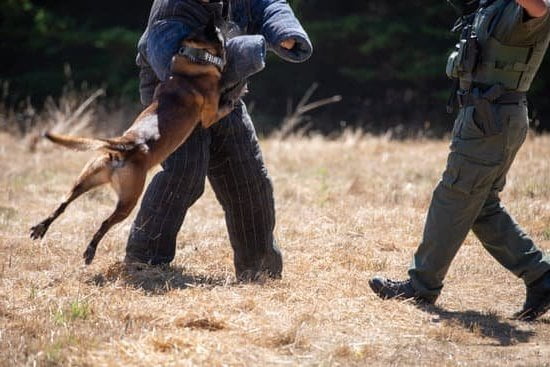Is your dog having trouble settling down in his kennel at bedtime? In this article, we will discuss how to train a dog to sleep in his kennel using positive reinforcement and effective crate training techniques. Whether you have a new puppy or an older dog, crate training can be a valuable tool for providing them with a safe and comfortable space of their own.
Crate training is not just about confining your pet; it’s also a way to create a positive association with the kennel, provide security for your furry friend, and help them feel at ease while you’re away. By understanding the importance of crating and implementing the right techniques, you can help your dog learn to love their kennel as a cozy retreat.
In this article, we will cover everything from choosing the right kennel for your dog to addressing common difficulties such as separation anxiety and fear. We’ll also explore the use of positive reinforcement and provide tips on troubleshooting if your dog still won’t sleep in his kennel. With dedication and patience, you can establish a safe and happy home for your beloved pet through successful crate training.
Choosing the Right Kennel for Your Dog
When it comes to crate training your dog, choosing the right kennel is crucial for their comfort and safety. There are various factors to consider when selecting a crate for your furry friend, including size, material, and design. Here are some key points to keep in mind when choosing the right kennel for your dog:
- Size: The size of the kennel should allow your dog to stand up, turn around, and lie down comfortably. It’s important to measure your dog and choose a crate that accommodates their size and breed.
- Material: Kennels come in different materials such as wire, plastic, or wood. Each material has its own advantages, so consider your dog’s needs and behavior when making a selection.
- Design: Consider the design of the kennel, including features such as doors, ventilation, and ease of cleaning. A well-ventilated kennel with a secure door can provide a comfortable environment for your dog.
In addition to these factors, it’s important to consider your dog’s individual needs and preferences when choosing a kennel. Some dogs may prefer an enclosed space for added security, while others may feel more comfortable in an open wire crate. By taking the time to choose the right kennel for your dog, you can create a positive environment for crate training and ensure that they have a safe and cozy space of their own.
Creating a Positive Association With the Kennel
When it comes to crate training your dog, creating a positive association with the kennel is essential. This involves making the kennel a comfortable and inviting space for your dog to spend time in.
One way to do this is by placing familiar and comforting items inside the kennel, such as your dog’s favorite toys, blankets, or even an article of clothing with your scent on it. Additionally, feeding your dog his meals inside the kennel can help him associate it with positive experiences.
Another important aspect of creating a positive association with the kennel is to avoid using it as a form of punishment. If your dog associates the kennel with negative experiences, he will be less likely to want to spend time inside it. Instead, focus on making the kennel a place where your dog feels safe and secure.
It’s also important to allow your dog to explore the kennel at his own pace. Forcing him inside or shutting the door too soon can create feelings of fear or anxiety. Instead, encourage him to enter the kennel on his own by using treats or praise. By allowing him to become comfortable with the kennel in his own time, you can help him develop a positive association with it.
| Aspect | Recommendation |
|---|---|
| Comforting items | Place familiar toys and blankets inside |
| Avoiding punishment | Avoid using the kennel as punishment |
| Allowing exploration | Encourage your dog to explore the kennel at his own pace |
Crate Training Basics
When it comes to training your dog to sleep in his kennel, establishing a routine is essential. Dogs thrive on routine and structure, so creating a consistent schedule for crate training will help your furry friend feel more comfortable and secure in his new sleeping space. Here are some key points to keep in mind when establishing a routine for crate training:
- Set a schedule for feeding and bathroom breaks: By feeding your dog at the same time every day and taking him out for bathroom breaks on a regular schedule, you can help regulate his bodily functions and minimize accidents in the kennel.
- Introduce short periods of confinement: Start by getting your dog used to being in the kennel for short periods of time while you are at home. Use positive reinforcement such as treats or toys to create a positive association with the crate.
- Gradually increase the duration of confinement: Over time, gradually increase the amount of time your dog spends in the kennel, making sure to provide plenty of mental and physical stimulation before placing him inside. This will help prevent boredom and anxiety while confined.
By establishing a routine for crate training that includes regular feeding and bathroom breaks, short periods of confinement with positive reinforcement, and gradually increasing the duration of confinement, you can help your dog feel more comfortable and secure in his kennel. Remember to be patient and consistent as you work through the crate training process with your furry companion.
Addressing Separation Anxiety and Fear
Dogs, like humans, can also experience separation anxiety and fear, especially when introduced to a new environment or routine such as sleeping in a kennel. It’s important for dog owners to understand the signs of separation anxiety and fear in their pets in order to address these issues effectively.
Some common signs of separation anxiety may include excessive barking, destructive behavior, pacing, or attempting to escape from the kennel. On the other hand, a dog experiencing fear may exhibit trembling, cowering, or even aggression.
To help your dog overcome separation anxiety and fear of the kennel, it’s crucial to gradually introduce them to the space. Start by placing their favorite toys or blankets inside the kennel and leaving the door open so they can freely explore it. This will help create positive associations with the kennel.
Additionally, you can provide treats or rewards whenever your dog voluntarily enters the kennel on their own. This will help them feel more comfortable and secure in the space.
Furthermore, you can also try leaving your dog alone in the kennel for short periods of time before gradually increasing the duration. It’s important to remember not to make a big fuss when leaving or returning home as this may increase your pet’s anxiety. By addressing separation anxiety and fear in a patient and consistent manner, you can help your dog feel safe and content when sleeping in his kennel.
| Separation Anxiety Signs | Fear Signs |
|---|---|
| Excessive barking | Trembling |
| Destructive behavior | Cowering |
| Pacing | Aggression |
Using Positive Reinforcement for Successful Crate Training
When it comes to crate training your dog to sleep in his kennel, positive reinforcement is key. Positive reinforcement involves rewarding your dog for desired behavior, which will encourage him to continue the behavior in the future. By using positive reinforcement techniques, you can create a positive association with the kennel and make it a comfortable and enjoyable space for your dog.
One effective way to use positive reinforcement for crate training is by offering treats and praise when your dog enters the kennel on his own or lies down inside. You can also provide toys or chews that are specifically designated for crate time, making the kennel a place where your dog can relax and enjoy himself.
By consistently rewarding your dog for going into his kennel and staying there, he will quickly learn that good things happen when he is in his designated space.
In addition to treats and toys, it’s important to offer verbal praise as well. When your dog goes into his kennel willingly or settles down inside, be sure to enthusiastically praise him with a happy tone of voice. This will reinforce the idea that being in the kennel is a positive experience. Over time, with consistent positive reinforcement, your dog will begin to view his crate as a safe and comfortable den where he can rest peacefully.
Common Mistakes to Avoid in Crate Training
Improper Sizing
One common mistake to avoid in crate training is choosing the wrong size kennel for your dog. The kennel should be large enough for your dog to stand up, turn around, and lay down comfortably, but not so large that they have extra space to use the bathroom. Dogs are less likely to eliminate in their own living space, so a properly sized kennel can aid in potty training as well.
Using the Kennel as Punishment
Another mistake to avoid is using the kennel as a form of punishment. If you only put your dog in the kennel when you leave or when they misbehave, they will start associating the kennel with negative experiences. This can lead to them being fearful or resistant of going into their kennel.
Inconsistency
Consistency is key when it comes to crate training. It’s important to establish a routine and stick to it. If you let your dog out of the kennel whenever they whine or bark, they will learn that making noise leads to getting out. This can make it difficult for them to settle down and relax in their kennel.
By avoiding these common mistakes in crate training, you can create a positive experience for your dog and help them see their kennel as a safe and comfortable space.
Troubleshooting
Assessing the Environment
If your dog is still refusing to sleep in his kennel even after consistent training, it may be time to reevaluate the environment. Make sure the kennel is placed in a quiet and comfortable area of the house where your dog feels safe. Avoid placing the kennel in high traffic areas or near loud noises, as this can cause distress for your pet.
Another important aspect to consider is the comfort of the kennel itself. Ensure that it is spacious enough for your dog to stand up, turn around, and lay down comfortably. Additionally, adding some soft bedding or a familiar toy inside the kennel can help make it a more inviting space for your dog to sleep.
Progressing at Your Dog’s Pace
It’s crucial to remember that every dog is different and may require varying amounts of time to adjust to sleeping in his kennel. If your dog continues to resist sleeping in the crate, you might need to take a step back and progress at a slower pace. This could involve leaving the door open initially, allowing your dog to explore and get used to the crate without feeling confined.
Alternatively, you can try using positive reinforcement techniques such as feeding your dog meals inside the crate or providing treats when he willingly enters on his own. This gradual approach can help build a positive association with the crate over time.
Seeking Professional Help
If despite all efforts, your dog still refuses to sleep in his crate, it might be wise to seek help from a professional trainer or behaviorist. These experts can evaluate your specific situation and provide tailored advice and strategies for successful crate training. Sometimes, there may be underlying issues such as separation anxiety or fear that require specialized intervention in order for your dog to feel comfortable sleeping in his kennel.
Conclusion
In conclusion, crate training is an essential part of providing a safe and secure environment for your dog. By choosing the right kennel and creating a positive association with it, you can help your dog feel comfortable and at ease in his own space. Establishing a routine for crate training, using positive reinforcement, and addressing any separation anxiety or fear will all contribute to successful training.
It’s important to remember that crate training takes time and patience. Avoiding common mistakes such as using the crate as punishment and ensuring that the crate is always associated with positive experiences will go a long way in helping your dog adjust. Additionally, if your dog still won’t sleep in his kennel, troubleshooting techniques such as adjusting the location of the crate or seeking professional help may be necessary.
Ultimately, by following these steps and dedicating time and effort to crate training, you will be able to create a safe and happy home for your dog. Remember that every dog is different, so it’s important to be patient and understanding throughout the process. With consistency and positive reinforcement, your furry friend will learn to love his kennel as his own special place.
Frequently Asked Questions
Why Won’t My Dog Sleep in His Kennel?
There could be several reasons why your dog won’t sleep in his kennel. It’s possible that he hasn’t been properly crate trained, or that he has developed a negative association with the kennel.
It could also be that the kennel is uncomfortable or not large enough for your dog to move around and get comfortable. Understanding your dog’s specific aversion to the kennel is key to addressing the issue.
How Do I Get My Dog to Sleep in His Crate Without Crying?
Getting your dog to sleep in his crate without crying will require patience and consistency. Start by making the crate a positive and comfortable place for your dog by using treats, toys, and praise. Gradually increase the amount of time your dog spends in the crate, and only let him out when he’s calm.
Avoid giving in to his crying, as this will reinforce the behavior. Over time, your dog should become more comfortable sleeping in his crate.
How Do I Get My Old Dog to Sleep in His Kennel?
Older dogs may have different reasons for not wanting to sleep in their kennels, such as joint pain or anxiety. It’s important to address any physical discomfort your old dog may have by providing a well-padded and supportive bed inside the kennel.
You can also try using calming aids such as pheromone diffusers or calming music to help ease any anxiety your older dog may be experiencing. Slowly acclimate him to the crate with positive reinforcement so that he begins to see it as a safe and comforting space for rest.

Welcome to the blog! I am a professional dog trainer and have been working with dogs for many years. In this blog, I will be discussing various topics related to dog training, including tips, tricks, and advice. I hope you find this information helpful and informative. Thanks for reading!





